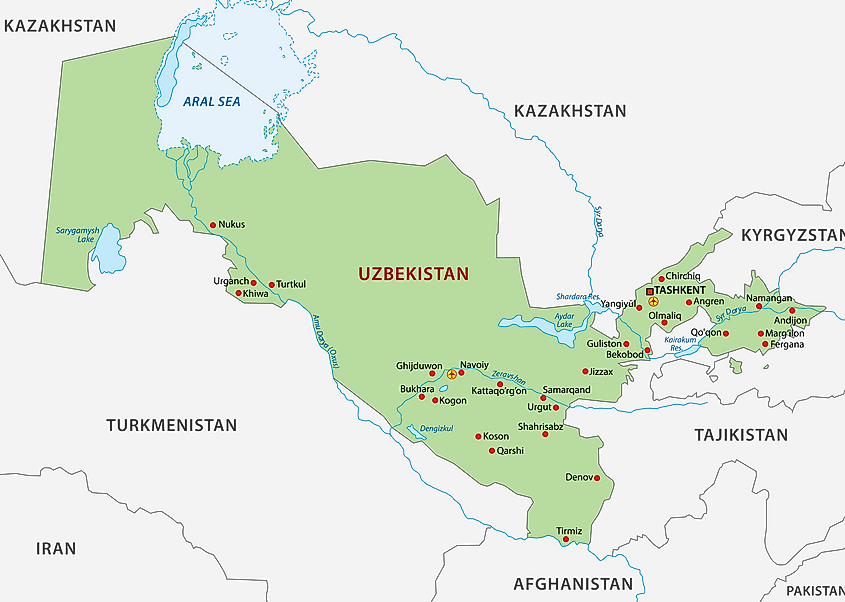The World's Two Double Landlocked Countries

- Uzbekistan and Liechtenstein are the world's only two double landlocked countries.
- Uzbekistan became landlocked after breaking away from the Soviet Union.
- Despite being double landlocked, Liechtenstein has one of the highest GDP per capita in the world.
Landlocked countries face the special challenge of having to rely on other countries with maritime borders for access to ocean trade routes. There are two landlocked countries in the world that are double landlocked, meaning that they are surrounded by countries that are themselves landlocked. Being a double landlocked country can be even more challenging since such a country must rely on more than one other country to allow the free movement of people and goods. The only two double landlocked countries of the world are Uzbekistan and Liechtenstein.
Uzbekistan

Uzbekistan is a country in Central Asia. It is one of the 12 landlocked countries of Asia. It is bordered by Turkmenistan, Afghanistan, Tajikistan, Kazakhstan, and Kyrgyzstan, all of which are, themselves, landlocked countries. What now constitutes the country of Uzbekistan, however, was not always landlocked.
Uzbekistan is a relatively new country. Beforehand, it was one of the republics that made up the Soviet Union. During the Soviet era, Uzbekistan’s goods and people had direct access to the ocean by way of other Soviet republics, such as Russia, Ukraine, Lithuania, Latvia, and Estonia. But in 1991, the Soviet Union collapsed, and Uzbekistan became independent.
Independence for Uzbekistan meant that the country had no direct access to the ocean via other former Soviet republics that they had during the Soviet era. To improve the movements of goods, Uzbekistan has forged closer ties with Russia, which was the dominant force in the Soviet Union, and which is still the principle foreign influencer in Uzbekistan today. Therefore, Uzbekistan joined various alliances dominated by Russia, including an economic pact known as the Eurasian Economic Community (EurASEC). At the same time, however, Uzbekistan has cultivated trade relations with other countries. Whereas Russia was its top trading partner in 2006, Uzbekistan traded heavily with other countries as of 2018, most notably China.
Liechtenstein

Liechtenstein is a tiny country in Western Europe, sandwiched between two other landlocked countries, Switzerland and Austria. It is one of the 17 landlocked countries of Europe.
Liechtenstein is also home to some high mountain peaks, as it lies in the Alpine region of Europe, which can make surface transportation difficult. In addition, Liechtenstein has no airport. Nevertheless, this tiny country has one of the highest GDP per capita in the world.
So how does Liechtenstein deal with the challenge of being double landlocked? It does so, firstly, with business-friendly policies and incentives. The country has a low, flat income tax. It also has very lax incorporation rules, which have attracted many holding companies. In fact, the offices that the holding countries establish in Liechtenstein account for 30% of the country’s revenue.
Secondly, Liechtenstein has joined various trade pacts. The country has a customs union with Switzerland, and imports 90% of its energy from the Swiss. Liechtenstein is also a member of the European Free Trade Association, and is now working to harmonize its economic policies with those of the European Union.
Furthermore, Liechtenstein is part of the Schengen area, which allows free movement within 26 European countries without a passport. To make a long story short, Liechtenstein has been able to prosper, despite its double landlocked status, by making itself business friendly and participating in an increasingly integrated Europe.











